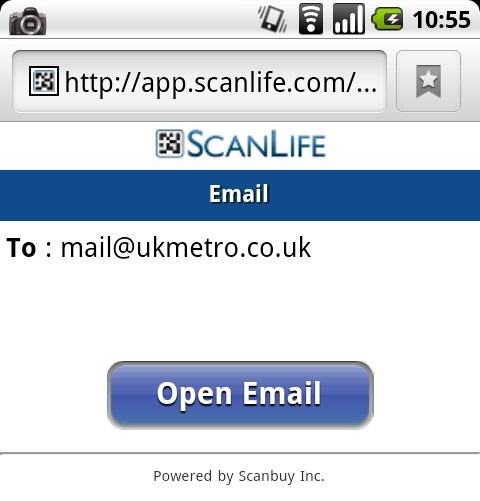The Metro have been on quite a QR splurge recently - this is their latest effort encouraging people to write in to the paper.

On the surface, it's quite a simple idea - yet Metro have needlessly complicated it.
The Process
The simplest process would be
- Scan Code
- Send Email
That's not what Metro have done. By using Scanlife as an intermediary, they change the process to
- Scan Code
- Connect to web
- Get redirected
- Get redirected again
- Load web page
- Click on link

Advantages and Disadvantages
Now, there are advantages to this approach.
- Metrics on how many people have scanned the code.
- ...
- ...errr...
Metrics are useful - but consider the disadvantages.
- Need for mobile coverage. That means everyone in the London Underground can't send an email until they're above ground - by which time they may have forgotten what they wanted to say.
- Requirement for Scanlife to stay up. While I have no doubt they have impressive uptime, at some point they will go down and so will Metro's ability to receive emails.
- Payments to Scanlife may escalate over time.
- Lack of design control over the page.
KISS
As with everything, simplicity is the key to success. Here's the simplest way for Metro to get email from their readers.

All this says is "mailto:mail@ukmetro.co.uk". Pure and simple. No coverage needed - the phone will open up its email client and send when the user is back in coverage.
If you wanted tracking, you could use "mailto:qrmail@ukmetro.co.uk".
Conclusions
It's great to see QR codes getting more mainstream traction - but we need to be wary of two things. Firstly, salesmen will try to bamboozle you with their proprietary solutions. Secondly, keep things as simple as possible to ensure widespread usage.
While I don't doubt that Metro gets some value from Scanlife, surely that's offset by the inability of a million tube passengers to send an email?